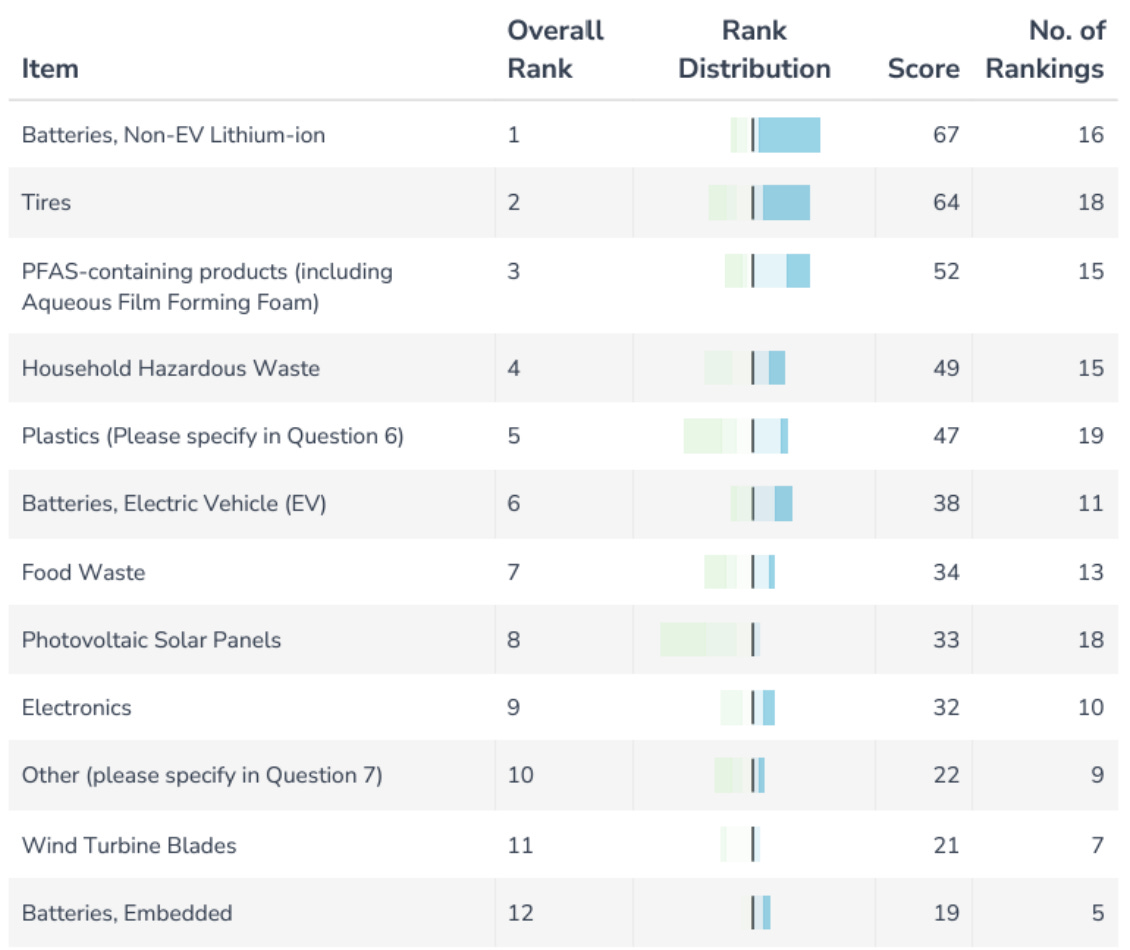Global Climate News - April 13-15
Drones for protecting biodiversity; financing water treatment through carbon credits; synthetic methane in Finland; Virtual Power Plants for California;
Clean Energy Economics
Prices of mono PERC M10 and G12 solar cells in China are 2% lower than last week. This is the 3rd straight week for falling solar cell prices. pv magazine
Drones for protecting biodiversity
Australia is restoring bushfire-damaged areas by dropping upto 40,000 seed pods a day using drones. Each “seed pod” contains a seed for the species to be planted - depending on the area, and nutrients and microbes to help the trees grow.
Another project is using neural nets to detect koalas in thermal imaging data gathered using drones.
New York Times | AirSeed | Wildlife Drones
Remotely operated drones were used to map underwater mountains in the southeast Pacific Ocean off the coast of Chile. The expedition discovered 100 suspected new species and photosynthetic organisms in depths far lower than previously known. The region explored - Salas y Gómez Ridge - may be designated as a marine protected area under the UN High Seas Treaty.
The Guardian | Schmidt Ocean Institute

Financing water treatment through carbon markets
Wastewater treatment facilities in the US need to meet the pollutant limits set by regulation, and typically build secondary and tertiary reverse osmosis plants (called “grey infrastructure”) to bring down pollutant levels. These plants have emissions both from energy use, and from the embodied emissions of materials used.
Overall, drinking water and wastewater systems account for approximately 2 percent of energy use in the United States, adding over 45 million tons of greenhouse gases annually. EPA
In place of adhering strictly to water pollution control standards, facilities in the US can engage in water quality trading that
allows one source of pollution to control a pollutant at levels greater than required and sell "credits" to another source, which uses the credits to supplement their level of treatment in order to comply with regulatory requirements. Pollutant reductions achieved through water quality trading must result in water quality that is as good as—or better than—what would be achieved through treatment and must not create pollutant “hot spots.” EPA
These water quality credits are similar to carbon offsets, but the market for them is much smaller and fragmented, compared to the voluntary carbon market.
A major focus in water treatment is reducing nitrogen and phosphorous levels (from fertiliser runoff). Different states have different limits for nitrogen and phosphorus, and the researchers (in a new paper) categorise these limits as level 2 to 5, where 5 is the strictest. In place of building energy-intensive reverse osmosis plants, the researchers recommend building “green infrastructure” - restoring floodplains and wetlands, regenerative agricultural practices, better forestry management - that will indirectly improve water quality, and trading carbon credits for these.
Annually, we find that grey treatment technologies would emit 29.8 MtCO2e while green treatment technologies would sequester 4.2 MtCO2e for the Level 5 scenario. This results in a annual carbon credit potential of 33.9 MtCO2e.
They estimate that the green infra would also be cheaper - $13.6 billion per year for the level 5 scenario - compared to $28.5 billion for grey infra, when normalised over the life of the technology. Besides, the green methods can be used in 70% of the areas analysed. At a carbon price of $20 per tonne of CO2 and assuming a 40-year lifespan for the green infra, carbon credits for these projects could sell for $307-679 million per year.
Their analysis reveals “31.7% and 20.8% of the desired nitrogen and phosphorus treatment could be achieved using green infrastructure” for the strictest scenario. However, they may be less expensive
While green treatment methods can only treat less than 40% of nitrogen and 25% of phosphorus needed in the United States, this would still represent a large decrease in infrastructure compared to the scenario where green treatment methods are not used. This is particularly true at the higher treatment levels where more advanced grey water treatment technologies are required. According to the EPA report, the only treatment technologies which can reach Level 5 concentration levels are those that use sidestream reverse osmosis filtration systems that suffer from issues of frequent fouling which both decreases treatment efficiency and increases operation expenses.
The researchers recommend further study on usefulness of green treatment methods in specific regions, and the effect of combining multiple green approaches.
Innovation News | Research Paper in nature
In previous issues of this newsletter
News from Governments
US Department of Energy has announced a new energy efficiency standard for light bulbs - 120 lumens per watt (current standard is 45 lumens per watt) effective July 2028. Facilities Dive | DoE Press Release
The European Commission has signed the European Solar Charter, that includes voluntary actions that the Commission and member states may take to support the solar sector in Europe. These actions include -
using non-price criteria such as responsible business conduct in auctions;
promoting forms of PV like agri-PV, floating solar, vehicle-integrated PV;
maintaining and expanding current production capacity;
urging solar buyers to apply non-price criteria in picking solar module manufacturers;
access to EU funding for solar manufacturing projects;
facilitating investment in solar projects from European Investment Bank;
improving skills for solar manufacturing;
assessing unfair industry practices
Australia’s Climate Change Authority has published Targets, Pathways and Progress, a paper that discusses an ambitious and achievable emissions reduction target - 65-70% reduction over 2005 levels by 2035 - for Australia while ensuring economic progress.
Top Stories
Finland is building it’s first synthetic methane plant, expected to be operational this year. The plant will use a 20MW electrolyser to produce hydrogen, carbon capture equipment to gather CO2, and bioreactors that will produce methane from hydrogen and CO2 through microbial fermentation. The bioreactor-maker claims the methanation process has 83% efficiency and runs at temperatures of 50-70℃ - much lower than chemical methane-production processes using catalysts. Offshore Energy | P2X Solutions | QPower
Europe is removing unused barriers, such as dams, from water bodies. These barriers block the flow of sediment, migration of fish and have also led to humans accidents in the strong currents downstream of weirs. In 2023, France, Spain, Sweden and Denmark led in removing barriers.
… many barriers on European rivers no longer fulfil their original purpose. These include dams that are no longer useful for hydropower generation, water supply or flood protection, and weirs that no longer act as river bed stabilisers because they are damaged, or because the rivers have changed configuration. Thousands of obsolete dams and weirs in Europe are fragmenting the arteries of the continent. Removing these obsolete barriers can help return rivers to their natural, free-flowing state, helping freshwater ecosystems to thrive, and facilitating the migration of endangered species, such as the sturgeon and the European eel. EIB
Removing embankments and restoring floodplains is also one of the strategies in UK’s Natural Flood Management Programme.
The Guardian | Amber Atlas of river barriers in Europe | Dam Removal Progress 2023 (PDF)
California could add 7.5 GW capacity by scaling use of 5 virtual power plant technologies - “smart thermostat-based air-conditioning control, behind-the-meter (BTM) batteries, residential electric vehicle charging, grid-interactive water heating, and automated demand response (auto-DR) for large commercial buildings and industrial facilities”. Researchers estimate doing this could “avoid $750 million per year in traditional power system costs”. Similar programs are in use in other areas of the US as well as in Japan.

Examples of Demand Response technologies being used at scale, Brattle Group (2024) Utility Dive | Brattle Group Report (PDF) | Virtual Power Plants & Demand Response in Japan, by Patrick McKenzie
India’s power utilities are increasingly opting for renewable power that can be delivered on a pre-determined schedule - typically wind/solar in combination with battery storage. The lowest tariff for which capacity has been awarded for firm renewable power is INR 4.64/kWh in a recent auction. Recently, California’s Public Utilities Commission passed a related decision that allows distributed energy resources to connect to the grid by adhering to specific generation profiles. ET Energy
Lithium batteries, tyres and PFAS-containing products top the list of most difficult materials to handle in a survey of waste management officials in the US.

Top 12 Most Difficult-to-Manage materials in waste, ASTSWMO Report In Los Angeles (USA), researchers are using plant species native to the region - telegraph weed, California buckwheat and mulefat - to clean up soil contaminated with heavy metals such as lead, arsenic and copper. The Guardian
International co-operation to accelerate green hydrogen deployment, report by IEA, includes briefs on the hydrogen strategies in different countries, incentive mechanisms to increase demand and what is needed to scale capacity.
You can find all previous posts of this newsletter here.
You can read over 200 stories from April 13, April 14, April 15 on Telborg.
I’d greatly appreciate you sharing this newsletter on Twitter and LinkedIn.
Have the best day!
Best,
Soumya Gupta
Founder, Telborg.com | SummaryWithAI.com






